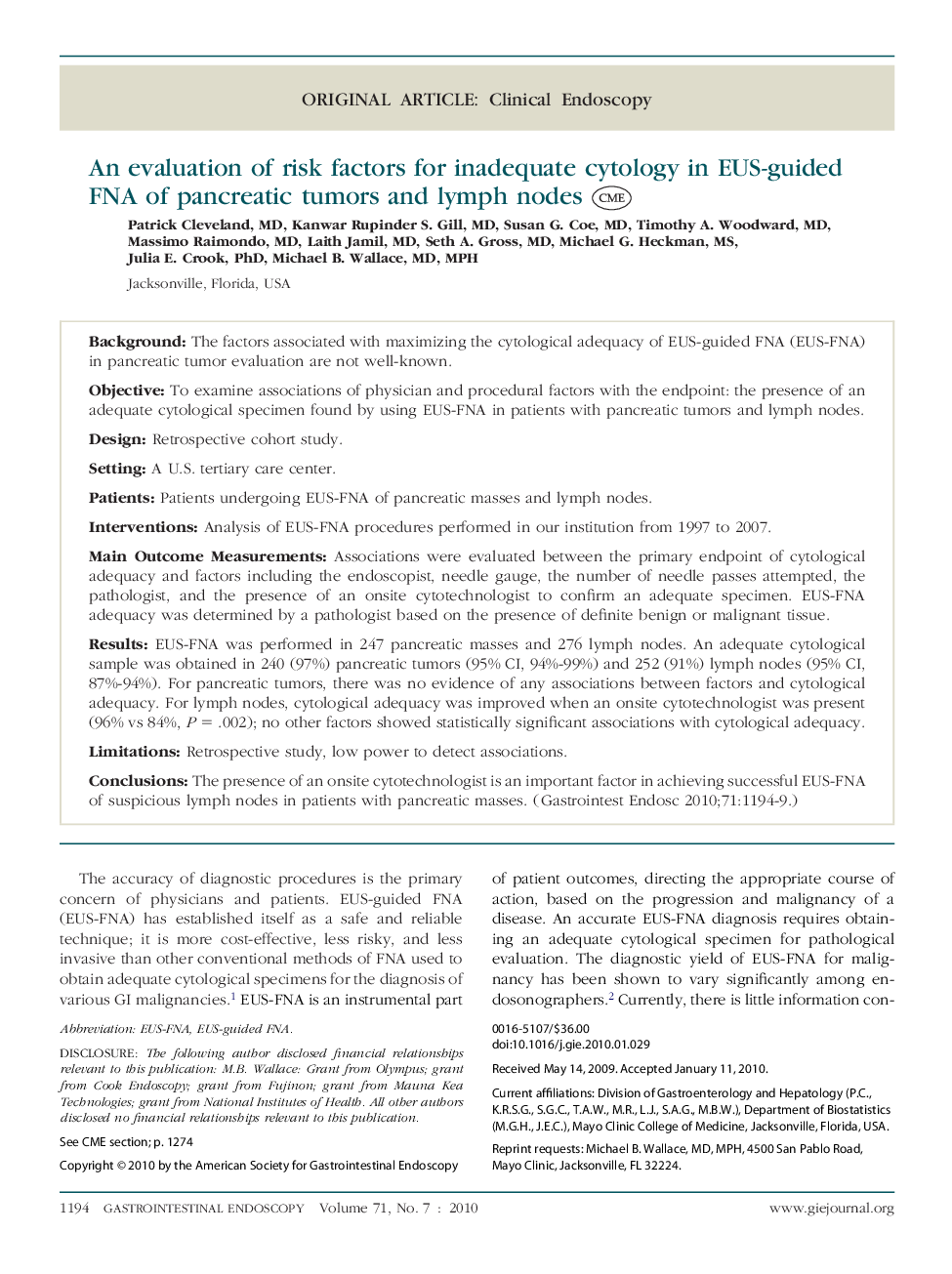| Article ID | Journal | Published Year | Pages | File Type |
|---|---|---|---|---|
| 3303954 | Gastrointestinal Endoscopy | 2010 | 6 Pages |
BackgroundThe factors associated with maximizing the cytological adequacy of EUS-guided FNA (EUS-FNA) in pancreatic tumor evaluation are not well-known.ObjectiveTo examine associations of physician and procedural factors with the endpoint: the presence of an adequate cytological specimen found by using EUS-FNA in patients with pancreatic tumors and lymph nodes.DesignRetrospective cohort study.SettingA U.S. tertiary care center.PatientsPatients undergoing EUS-FNA of pancreatic masses and lymph nodes.InterventionsAnalysis of EUS-FNA procedures performed in our institution from 1997 to 2007.Main Outcome MeasurementsAssociations were evaluated between the primary endpoint of cytological adequacy and factors including the endoscopist, needle gauge, the number of needle passes attempted, the pathologist, and the presence of an onsite cytotechnologist to confirm an adequate specimen. EUS-FNA adequacy was determined by a pathologist based on the presence of definite benign or malignant tissue.ResultsEUS-FNA was performed in 247 pancreatic masses and 276 lymph nodes. An adequate cytological sample was obtained in 240 (97%) pancreatic tumors (95% CI, 94%-99%) and 252 (91%) lymph nodes (95% CI, 87%-94%). For pancreatic tumors, there was no evidence of any associations between factors and cytological adequacy. For lymph nodes, cytological adequacy was improved when an onsite cytotechnologist was present (96% vs 84%, P = .002); no other factors showed statistically significant associations with cytological adequacy.LimitationsRetrospective study, low power to detect associations.ConclusionsThe presence of an onsite cytotechnologist is an important factor in achieving successful EUS-FNA of suspicious lymph nodes in patients with pancreatic masses.
